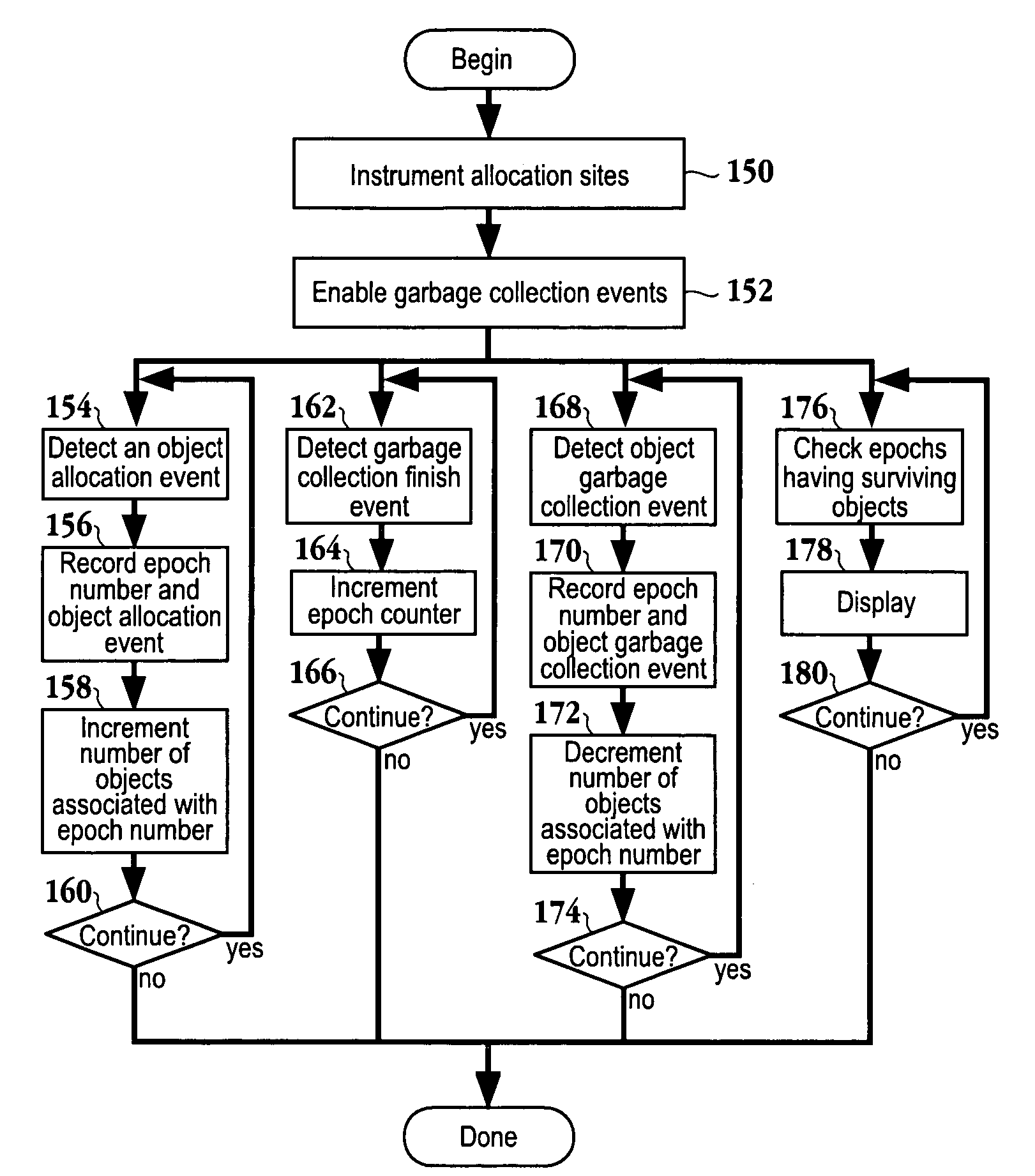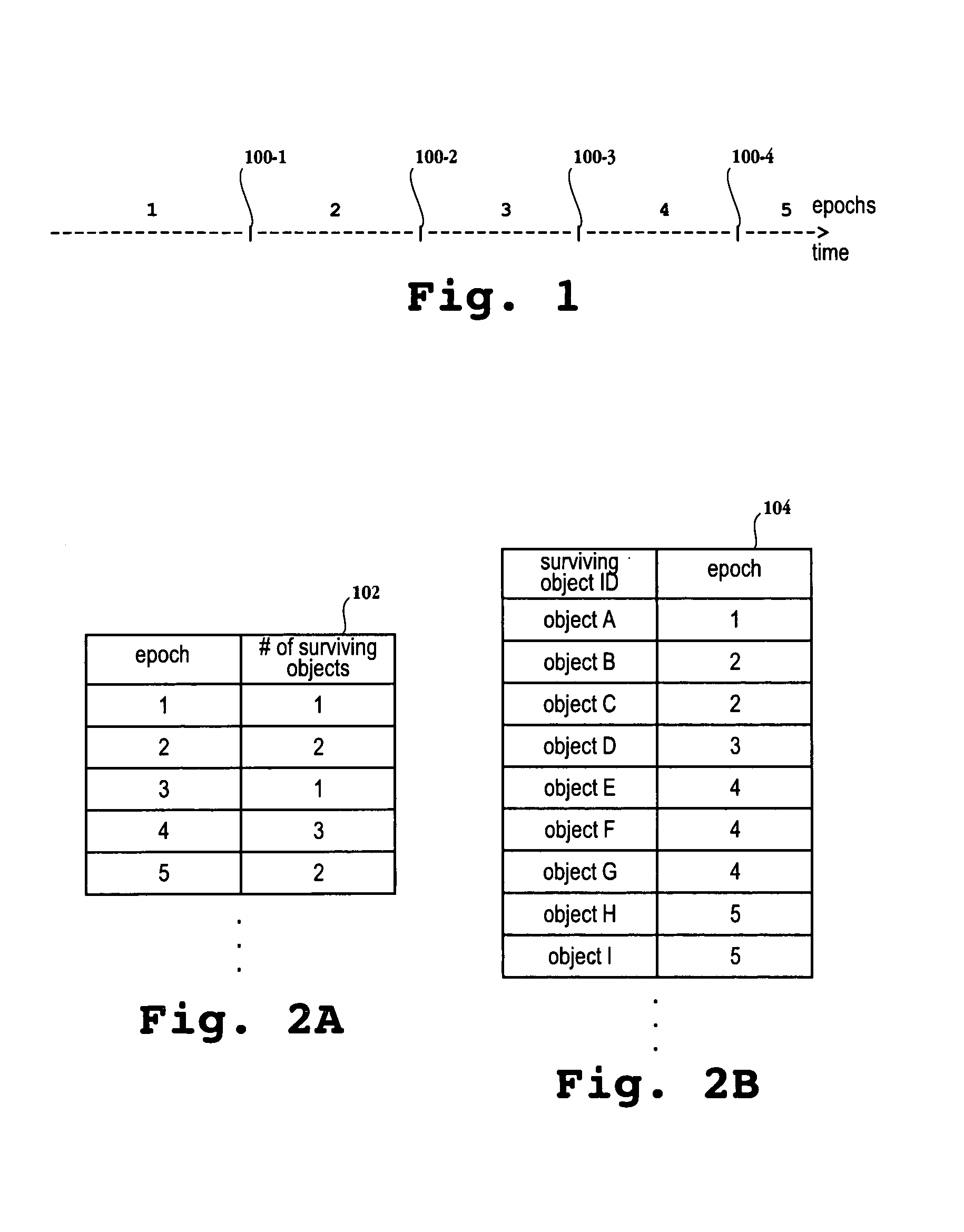Method for monitoring heap for memory leaks
a memory leak and heap technology, applied in the field of object-oriented programs, can solve problems such as memory leaks in programs written in c++ languages, program crash, leaks, etc., and achieve the effect of low overhead, low overhead, and low overhead method
- Summary
- Abstract
- Description
- Claims
- Application Information
AI Technical Summary
Benefits of technology
Problems solved by technology
Method used
Image
Examples
Embodiment Construction
[0028]An invention is described for a system and method for evaluating whether an object-oriented program has memory leaks. It will be obvious, however, to one skilled in the art, that the present invention may be practiced without some or all of these specific details. In other instances, well known process operations have not been described in detail in order not to unnecessarily obscure the present invention.
[0029]The embodiments of the present invention provide a tool capable of collecting, processing, and presenting data that may be used to determine if a memory leak is occurring. In one embodiment, a profiling tool may be used to inject code into the application in order to provide a profile. One such profiling tool is discussed in application Ser. No. 10 / 783,863. The injected code then generates events when the injected code is executed. From these events include, a system administrator is able to detect memory leaks and determine the cause of the memory leaks. Discussed belo...
PUM
 Login to View More
Login to View More Abstract
Description
Claims
Application Information
 Login to View More
Login to View More - R&D
- Intellectual Property
- Life Sciences
- Materials
- Tech Scout
- Unparalleled Data Quality
- Higher Quality Content
- 60% Fewer Hallucinations
Browse by: Latest US Patents, China's latest patents, Technical Efficacy Thesaurus, Application Domain, Technology Topic, Popular Technical Reports.
© 2025 PatSnap. All rights reserved.Legal|Privacy policy|Modern Slavery Act Transparency Statement|Sitemap|About US| Contact US: help@patsnap.com



